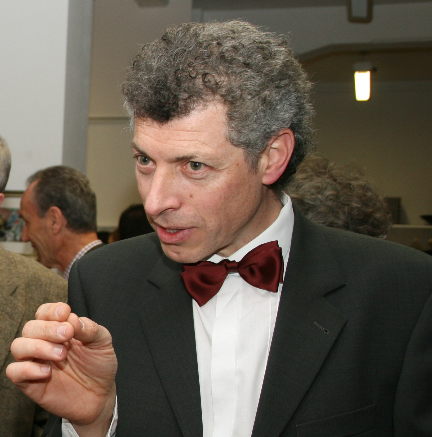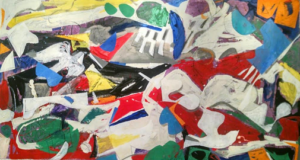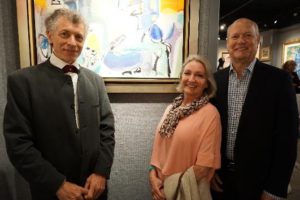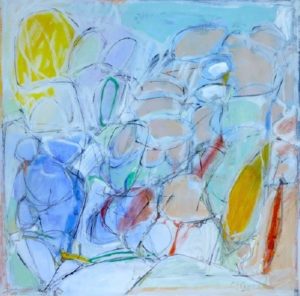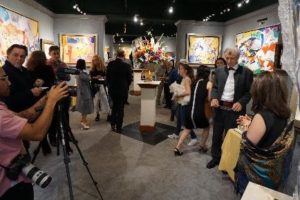Artist Interview – Professor Cristian Korn
The following interview was done between artist Cristian Korn and Collectors & Le Vernissage Gallery Owner, Doctor Tamara Hovhannisyan. This interview was a follow up to the artist’s successful reception and recent visit to the US.
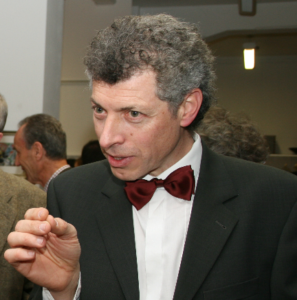 Professor Korn: Well, painting is a means of expression and looking for that expression fulfills oneself through painting. Possibly, I can paint better than I can express via other mediums and the feedback of people confirm it. I don’t paint for routine. I don’t like routine. I am not a “routinary” being and my painting is not a habit. It needs pauses. I need to enrich my life by surrounding myself with people and nature.
Professor Korn: Well, painting is a means of expression and looking for that expression fulfills oneself through painting. Possibly, I can paint better than I can express via other mediums and the feedback of people confirm it. I don’t paint for routine. I don’t like routine. I am not a “routinary” being and my painting is not a habit. It needs pauses. I need to enrich my life by surrounding myself with people and nature.
Tamara: In time of personal crisis, if you have had them, of course, you are a human being, you have had them, what plays the biggest roll in your life? Faith? Creativity? The people you love? What is the roll of creativity during difficult times?
Professor Korn: The processes of crisis within me are different. Sometimes it has brought me to a stop. I was born in Argentina, my mother is Argentinian and my father is German. A crisis I remember, of course, was transplanting from country to country, from Argentina where I was born, to Italy and finally settling in Germany, my Father’s home land. It is not easy adapting to people and culture. A second crisis I remember was the birth of my first child. It was like a male pregnancy until one day, as if the baby had been delivered, I painted an open road.
Another crisis was my father’s death. During that time I drew, from memory, a lot of portraits of my father, but, I soon realized that I was not drawing my father, I was drawing my pain.
| Cristian Korn – Free Birds – Oil on Linen 79”x39” |
Tamara: What is in your emotional baggage as a person of two lives, Argentina and Germany? What are the creative offerings that you brought from one side to the other? Was it the color and passion of the Latin world brought to warm up the coldness of the west? What was helpful to adapt?
Professor Korn: As a person of two cultures I find imagination that has two pages. In my personal baggage I carried two things. One, I had a formation and an interest to study color. Color is elementary, especially in my paintings. I also had an excellent formation in classical drawing. I always considered myself a good drawer. The classical school of drawing in Argentina gave me a traditional vision and it also made me open to borders. This is the second thing I brought with me, the vision that, if I like it, things could be done in different ways. It is not a country that does not only see within itself. It has had many immigrants and those immigrants have brought their own cultural baggage. The culture lives in different ways and this helped me to open horizons. When I arrived to Europe I was convinced that painting was full of emotions and that good music touches me but, a good painting reaches my inner being much easier.
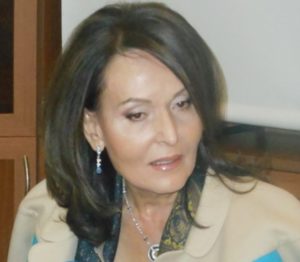 Tamara: Is your creativity accompanied with melody or vision?
Tamara: Is your creativity accompanied with melody or vision?
 Professor Korn: Before I believed I could not live without music. I have painted a lot listening to music, especially Johann Sebastien Bach and next to some modern interpretations, but, right now I have to get away from music. It makes me go into a specific route in which it wants me to go, but, I want to go my own way. I do have ideas but in most paintings I do not know how they will turn out.
Professor Korn: Before I believed I could not live without music. I have painted a lot listening to music, especially Johann Sebastien Bach and next to some modern interpretations, but, right now I have to get away from music. It makes me go into a specific route in which it wants me to go, but, I want to go my own way. I do have ideas but in most paintings I do not know how they will turn out.
Tamara: Professor Korn, in your paintings you break views and separate them with colors, yet there is inner harmony in the vision. Is this separation of vision and ideas or is it decorating or accessorizing your vision? When do you consider a painting to be a success? Is your work a photographic transformation of the thought, or do you adorn your expression with your educated technique?
Professor Korn: Hardly do my paintings have a vision of what they would look like once I start them. The point is to start. There are forms that exist and begin to be organized, and I am coming closer to an idea as I do it. This means that the painting takes shape as I do it. But I am interested of a reality different of what reality offers. I don’t like a superficial reality of what is commonly being offered. With those breaks, accents of colors, I am giving a different dynamic to my works, and I am very interested on the dynamic of the work. I am interested that the painting comes up to a specific level. Sometimes I feel I become an observer of the painting I am creating. I need lots of pauses and I ignore the time as I feel I have no understanding of time. But I do have an understanding that my work is the result of multiple experiences.
| Professor Cristian Korn with Mr. and Mrs. Welsh on Artist’s reception night. Painting “Study from San Remo”, now on Mr. and Mrs. Welsh private collection. |
A Collector, whom I consider a close friend, Mr. Welsh, asked me, how long did the painting take? I do not know, I answered, but, I identify with a phrase expressed by Van Gogh: “I finished a painting in 3.5 hours, but it took me 37 years of my life to complete it”.
Tamara: How deeply are you connected, and some of the Artists have unhealthy connections with their art work, as they are not parting from them too easily. Some worry as to whom will have it, and then there is a third group of Artists which does not care and see the art work as another finished piece. Which category do you have yourself?
Professor Korn: From the first category I am not sure. The painting which I am not interested on offering I keep it as it becomes a source of ideas for something else. I call them mother paintings as they give birth to other paintings. Sometimes they are too small and there is no commercial interest for them.
Maybe I am more of the second category. I like to make sure the painting goes to a good hand. Therefore in this particular exhibition I am very happy that the persons who have acquired them show happiness and see a piece of art where they can reflect themselves. It keeps me in tune with them as a person. I do care much and frequently wonder what happened to some of my works, who has them? Have they changed hands? I like to know that on the other side of the art there is someone else and then I think there is an emotional communicationwith that person.
Tamara: What is art for you? A friend, a lover, an enemy or all of them together?
Professor Korn: Art is a way of communication, and a very spiritual way, where I condense sensations to create or find a vocabulary I have not had. I am a passive admirer, love music and literature. I admire them but I am not a musician nor a poet. There is something I learned from Matisse that painting is an instrument for the improvement of the environment. A work of art is among other things and above all, a sum of ideas, it is from the surge of those ideas that you have political regimes prohibiting the pursuit of art.
Returning to Matisse, he said that whoever sees a painting should be able to drop the tiredness or negativity that occupies him. The viewer should allow to be taken away in a path of wellness and relaxation proposed by the artist perhaps to comfort her mood.
It is a somewhat Aristotelian concept of uniting artistic truth to good, and I find it wonderful that we have that possibility.
| Homage to Giacometti – Oil on Canvas 39”x39” |
I have an interest that my paintings have an easy read, more transparency, twisted lines, scrapings, and lines removed such that each reading causes the person to discover something new. I also have an interest that those who sell my paintings have an interest on working with a genuine and human touch, this way the person who buys the piece takes it happily.
I am interested in the thought that makes the artwork a sum of ideas and generate an aesthetic fact similar to the contemplation of nature and humble but steadily reinforce the viewer in moments of spiritual weakness or tiredness leaving an imprint of a positive feeling.
Tamara: What are you searching for?
Professor Korn: I am searching for ways to express an idea, to find the right vocabulary that translates emotions and feelings into a personal language. In a way I feel myself as an interpreter, only that a common interpreter translates with his knowledge and experience one language to another. The journey of the art I take, translates from one language to another but also creates the vocabulary. I try to fight and it is indeed a fight to find the vocabulary accordingly. Since my art is not constant or linear…meaning a figurative work into a figurative painting, but more, the description or a process in which each painting has a language in itself, and the fight is to create the language for each painting. This is why I consider my art as individual pieces and not as a series of works. This is why I am interested on a “plural road”, a road with multiple ways. For example, a tree, which I like much, there is trunk, and multiple branches. Each branch is my work.
Tamara: Many artist consider creativity or inspiration a type of mysticism. Is there a mysticism in art for you?
Professor Korn: I do not like the word inspiration because it has been misused and confused. I think there is a kind of concentration with oneself and from there one takes what one can. At the same time a link or energetic moment of grace, there is a moment where one defeats time and stops the clock and loses the notion of minutes or seconds. It is a sum of sensations or a creative power, maybe the force of a book or its written content. I do not wait for inspirational moments. I work. I provoke the state by working, researching. “Only love achieves wonders” … the creative process is a severe hard process, heavy with sweat.
In regards to mysticism and inspiration, I leave my sandals outside my studio and go in to work.
Tamara: What is your relationship with the people who collect your work?
| Cristian Korn Art Reception – Collectors Gallery |
Professor Korn: In regards to my relationship with the people who enjoy my work, there is always a sincere “flirtation” and admiration, a very sincere approach with so many people in such a short time. Many people buy for a financial investment. I feel oblivious to the financial part. What interests me is that people who purchase my art feels a closeness to my work and myself. I am always interested on learning about the person buying.
Editor’s Note: In our future editions, we will continue our soulful conversations with various Artists with whom we work. In our humble opinion, this is the best part of our journey in publishing: discovering unedited magic of art and creativity that will always be shared with you.
Tamara Hovhannisyan, PhD
